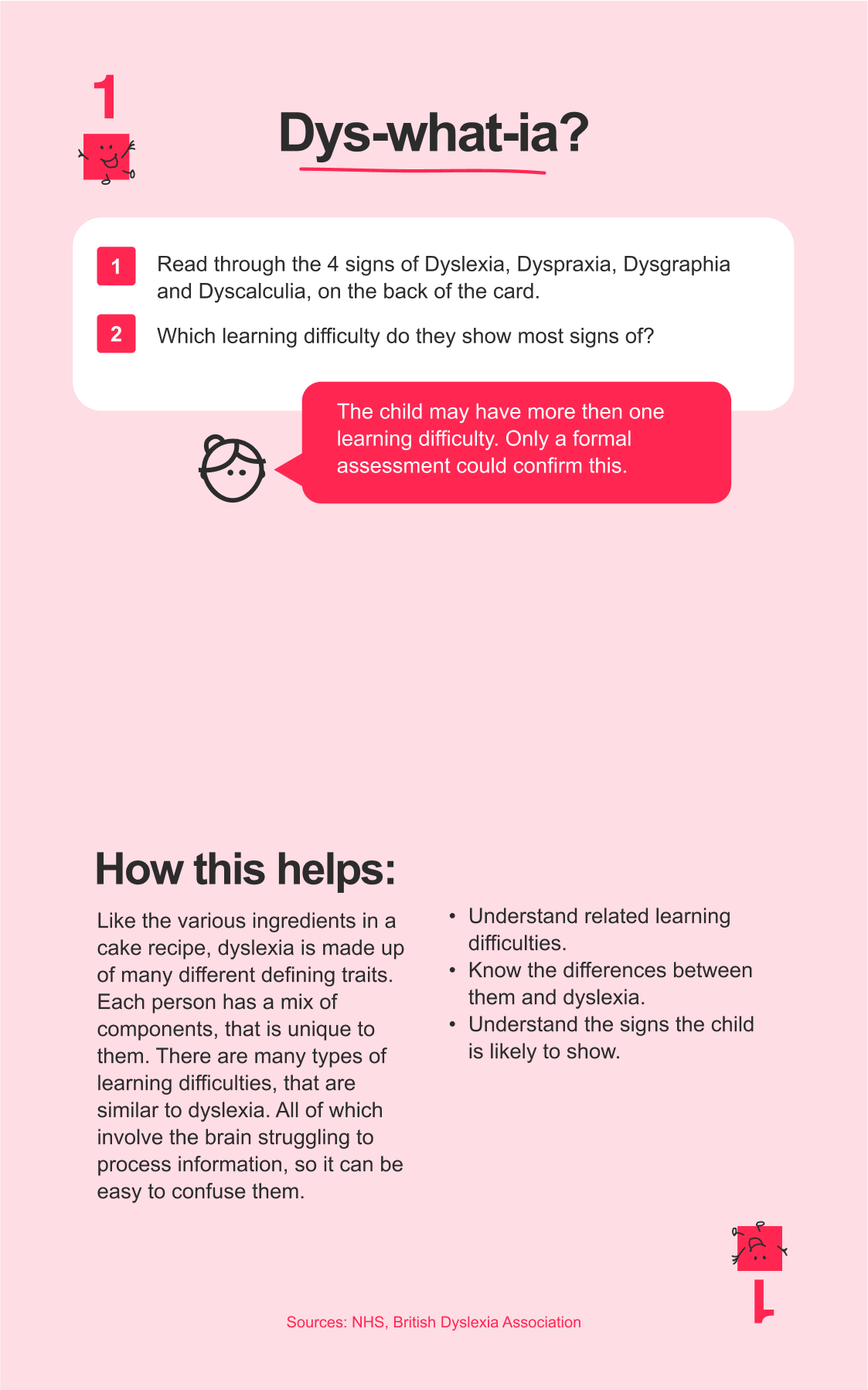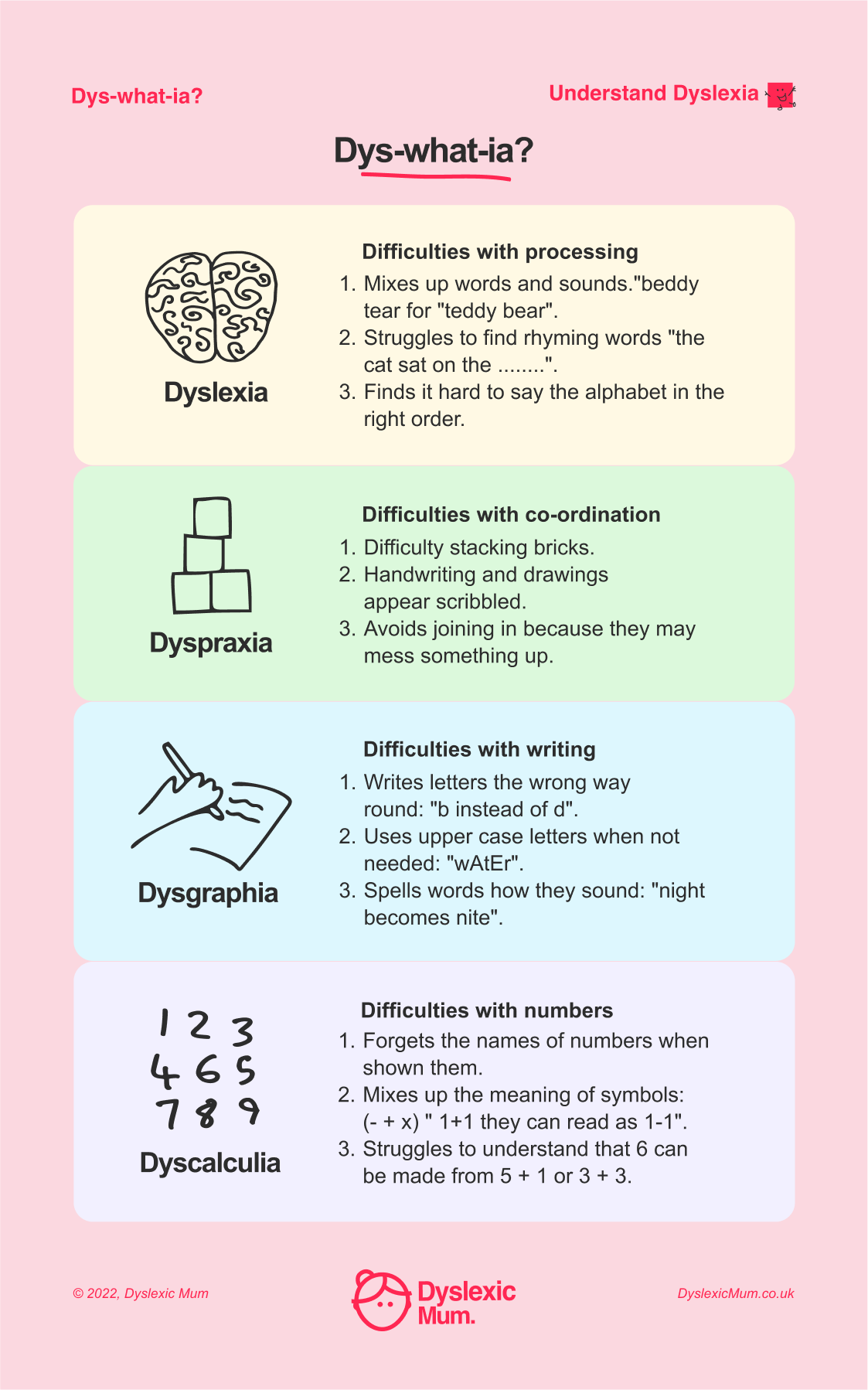Dys-what-ia? Card
To explain the difference between similar learning difficulties to a child, use the “Dys-what-ia?” card below.
This Mooki Card is based on scientific research. Learn more, “Neurodiversity and co-occurring difficulties”.


Different types of dyslexia
Learn below about how the Dyslexia Mum struggled to understand the different types of dyslexia:
“When I first started to notice that my child had the signs of dyslexia, I spoke to other parents. They would say, “that sounds like my sister, she has dyspraxia”. Or “have you thought maybe she has dysgraphia?”. This left me feeling overwhelmed and confused.
I needed easy-to-understand examples showing the differences between dyslexia and other learning difficulties. So I made the card above to help myself and others.”
Watch the clickable video ‘Types of dyslexia’ below. Where the Dyslexic Mum explains the differences between neurodiversities that are similar to dyslexia.
Can a child have both dyslexia, dysgraphia, dyscalculia and dyspraxia?
Yes a child can have dyslexia, along with dysgraphia, dyscalculia and dyspraxia.
They are all learning difficulties caused by a brain processing issue.
A child may have just one or a mix of these neurodiversities. Research has shown:
- 53% of dyslexic children are likely to also have dyspraxia.
- 10% of children have dyslexia and dysgraphia, dyscalculia or dyspraxia.
- 20%-40% of dyslexic children also have ADHD.
Difference between dyslexia and learning difficulties
There are many learning difficulties similar to dyslexia, such as dyspraxia, dyscalculia and dysgraphia.
Children with dyslexia, dyspraxia, dyscalculia and dysgraphia all struggle to:
- Process information
- Learn new things
- Interact with the world around them.
All these learning difficulties are recognised as disability in the UK. Legally, schools have to provide extra support and make changes to help these children.
Dyspraxia what is it?
Dyspraxia mainly affects a child’s movement and fine motor skills. For example, being able to thread beads onto a string.
Dyspraxia is a learning difficulty that mainly affects:
- Body Movements
- Small Movements
- Organisation
- Concentration
- Communication
Dysgraphia, what is it?
Dysgraphia mainly affects a child’s writing ability. For example, being able to form letters correctly when writing.
It is a learning difficulty and is caused by a brain processing issue.
Dysgraphia mainly affects:
- Gripping pens or pencils
- Forming letters and numbers
- Spelling
- Grammar
- Writing speed
Dyscalculia, what is it?
Dyscalculia mainly affects a child’s maths and number ability. For example, being able to add and subtract numbers easily.
It is a learning difficulty that is also linked to memory issues.
Dyscalculia affects the child’s ability to:
- Recognise Number
- Do basic maths sums
- Learn times-tables
- Tell the time (anologue clock)
- Understand 3D shapes
- Get organised
Dyslexia articles
To learn more about how neurodiversities affect children, see the blog post links below:
Designed to help dyslexic children Mooki Cards. Complete with 56 cards and storage wallet. Perfect for using at home or in the classroom. Order your Mooki Cards here!

